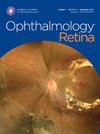Comparative Effectiveness of Glucagon-Like Peptide-1 Receptor Agonists, Sodium-Glucose Cotransporter 2 Inhibitors, Dipeptidyl Peptidase-4 Inhibitors, and Sulfonylureas for Sight-Threatening Diabetic Retinopathy
IF 4.4
Q1 OPHTHALMOLOGY
引用次数: 0
Abstract
Objective
To investigate whether the choice of glucose-lowering agent for type 2 diabetes (T2D) impacts a patient’s risk of developing sight-threatening diabetic retinopathy complications.
Design
Retrospective observational database study emulating an idealized target trial.
Subjects
Adult (≥21 years) enrollees in United States commercial, Medicare Advantage, and Medicare fee-for-service plans from January 1, 2014, to December 31, 2021, with T2D and moderate cardiovascular disease (CVD) risk who had no baseline history of advanced diabetic retinal complications, initiating treatment with glucagon-like peptide-1 receptor agonists (GLP-1 RA), sodium-glucose cotransporter 2 inhibitors (SGLT2i), dipeptidyl peptidase-4 inhibitors (DPP-4i), and sulfonylureas.
Methods
We used inverse propensity scoring weights in time-to-event Cox proportional hazards models.
Main Outcome Measures
Treatment for either diabetic macular edema or proliferative diabetic retinopathy.
Results
The final study population included 371 698 patients, of whom 42 265 initiated GLP-1 RA, 53 476 initiated SGLT2i, 78 444 initiated DPP-4i, and 197 513 initiated sulfonylurea agents. The probability of treatment for sight-threatening retinopathy within 2 and 5 years was 0.3% and 0.7% for patients initiating SGLT2i (median follow-up 830 [interquartile range (IQR), 343–1401] days), 0.4% and 1.0% for GLP-1 RA (669 [IQR, 256–1167] days), 0.4% and 0.9% for DPP-4i (1263 [IQR, 688–1938] days), and 0.5% and 1.2% for sulfonylurea (1223 [IQR, 662–1879] days). Sodium-glucose cotransporter 2 inhibitors use was associated with a lower risk of treatment for sight-threatening retinopathy compared with all other medication classes, including GLP-1 RA (hazard ratio [HR], 0.73; 95% confidence interval [CI], 0.55–0.97), DPP-4i (HR, 0.79; 95% CI, 0.64–0.97), and sulfonylurea (HR, 0.61; 95% CI, 0.50–0.74). Glucagon-like peptide-1 receptor agonists use was associated with a similar risk of sight-threatening retinopathy as DPP-4i (HR, 1.07; 95% CI, 0.85–1.35) and sulfonylurea (HR, 0.83; 95% CI, 0.67–1.03).
Conclusions
Sodium-glucose cotransporter 2 inhibitors use was associated with a lower risk of sight-threatening diabetic retinopathy among adults with T2D and moderate CVD risk compared with other glucose-lowering therapies. Glucagon-like peptide-1 receptor agonists do not confer increased retinal risk, relative to DPP-4i and sulfonylurea medications.
Financial Disclosure(s)
Proprietary or commercial disclosure may be found in the Footnotes and Disclosures at the end of this article.
GLP-1 受体激动剂、SGLT2 抑制剂、DPP-4 抑制剂和磺脲类药物治疗视力危急型糖尿病视网膜病变的疗效比较。
目的研究2型糖尿病(T2D)降糖药物的选择是否会影响患者发生危及视力的糖尿病视网膜病变并发症的风险:模拟理想化目标试验的回顾性观察数据库研究:研究对象:2014 年 1 月 1 日至 2021 年 12 月 31 日期间参加美国商业计划、医疗保险优势计划和医疗保险付费服务计划的成人(≥21 岁),患有 T2D 和中度心血管疾病(CVD)风险,且无晚期糖尿病视网膜并发症基线病史、开始接受胰高血糖素样肽-1 受体激动剂(GLP-1 RA)、钠-葡萄糖共转运体 2 抑制剂(SGLT2i)、二肽基肽酶-4 抑制剂(DPP-4i)和磺脲类药物治疗。方法:我们在时间到事件 Cox 比例危险度模型中使用了反倾向评分权重:主要结果测量:糖尿病黄斑水肿或增殖性糖尿病视网膜病变的治疗:最终研究对象包括 371 698 名患者,其中 42 265 人开始使用 GLP-1 RA、53 476 人开始使用 SGLT2i、78 444 人开始使用 DPP-4i 和 197 513 人开始使用磺脲类药物。开始使用 SGLT2i 的患者在 2 年和 5 年内出现危及视力的视网膜病变的治疗概率分别为 0.3% 和 0.7%(中位数随访 830 [四分位间范围 (IQR),343-1401]天),开始使用 DPP-4i 的患者在 2 年和 5 年内出现危及视力的视网膜病变的治疗概率分别为 0.4%和 1.0%,DPP-4i(1263 [IQR,688-1938] 天)为 0.4%和 0.9%,磺脲类(1223 [IQR,662-1879] 天)为 0.5%和 1.2%。与所有其他药物类别(包括 GLP-1 RA(危险比 [HR],0.73;95% 置信区间 [CI],0.55-0.97)、DPP-4i(HR,0.79;95% CI,0.64-0.97)和磺脲类药物(HR,0.61;95% CI,0.50-0.74))相比,使用钠-葡萄糖共转运体 2 抑制剂治疗视网膜病变的风险较低。胰高血糖素样肽-1受体激动剂与DPP-4i(HR,1.07;95% CI,0.85-1.35)和磺脲类(HR,0.83;95% CI,0.67-1.03)发生视网膜病变的风险相似:结论:与其他降糖疗法相比,使用钠-葡萄糖共转运体 2 抑制剂可降低患有 T2D 和中度心血管疾病风险的成年人发生危及视力的糖尿病视网膜病变的风险。与 DPP-4i 和磺脲类药物相比,胰高血糖素样肽-1 受体激动剂不会增加视网膜风险:专利或商业信息披露见本文末尾的 "脚注和披露"。
本文章由计算机程序翻译,如有差异,请以英文原文为准。
求助全文
约1分钟内获得全文
求助全文

 求助内容:
求助内容: 应助结果提醒方式:
应助结果提醒方式:


